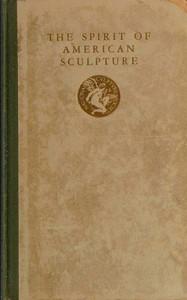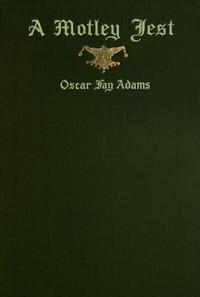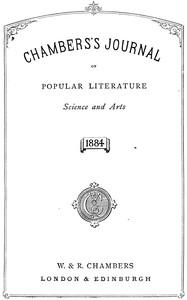Read this ebook for free! No credit card needed, absolutely nothing to pay.
Words: 36077 in 7 pages
This is an ebook sharing website. You can read the uploaded ebooks for free here. No credit cards needed, nothing to pay. If you want to own a digital copy of the ebook, or want to read offline with your favorite ebook-reader, then you can choose to buy and download the ebook.


: The spirit of American sculpture by Adams Adeline - Sculpture American; Sculpture United States History
II OUR BLITHE BEGINNING DAYS 29
JOHN QUINCY ADAMS WARD 57
AUGUSTUS SAINT-GAUDENS 67
DANIEL CHESTER FRENCH 76
V THE STATUE AND THE BUST AND THE IDEAL FIGURE 101
VI OUR EQUESTRIAN STATUES 125
X THE NATIONAL SCULPTURE SOCIETY 191
THE SPIRIT OF AMERICAN SCULPTURE
MRS. PATIENCE WRIGHT SPEAKS THE
What a pity that Thackeray, surveying our pre-Revolutionary American world in the interest of his Esmond and his Virginians, had not chanced to espy the valiant figure of our first American sculptor, Mrs. Patience Lovell Wright of New Jersey,--Quaker, wax-image-maker, traveler, keen Republican observer of the moods of British royalty and the movements of British troops! Had his mind's eye but once seen her in her eagerly-frequented rooms on Pall Mall, with the notables of the town literally under her thumb, in wax, and over her shoulder, in the flesh, we might have had from his pen a portrait worthy to live beside that of Beatrix, or of Madam Esmond, or of the Fotheringay herself. Similarly, if Lytton Strachey, building his Books and Characters, had followed out a line or two of Horace Walpole's concerning the "artistess," he might have given us a Mrs. Wright fully as engaging as his Madame du Deffand, perhaps almost as "inexplicable, grand, preposterous" as his Lady Hester. Such joys were not to be ours. Some of the traits that Thackeray and Strachey might have dwelt on for our delight have been well sketched by. Abigail Adams, incorruptible eye-witness and letter-writer.
Mrs. Adams, though taken aback by the "hearty buss" with which the sculptress greeted ladies and gentlemen alike, observed that "there was an old clergyman sitting reading a paper in the middle of the room, and though I went prepared to see strong representations of real life, I was effectually deceived in this figure for ten minutes, and was finally told that it was only wax." And Elkanah Watson, meeting Mrs. Wright in Paris, where she was living in her dual capacity as artist and patriot, notes that "the wild flights of her powerful mind stamped originality on all her acts and language." He tells us that the British king and queen often visited her in her London rooms, where they would induce her to work on her heads regardless of their presence, and where, at times, as if forgetting mundane deferences in the swirl of her inspiration, she would address them offhand as George and Charlotte.
The intrepid if somewhat incongruous figure of this Quaker artist abroad will serve very well as herald or prologue to the drama of American sculpture. Nor can I think that either Mr. Greenough or Mr. Powers, Mr. Ward or Mr. Saint-Gaudens, Mr. French or the very youngest sculptor newly laureled by our American Academy in Rome would object to that assignment of r?le. Surely in any play, it is allowed that the herald may seem somewhat more fantastic and legendary than the kings and counselors that come after. Mrs. Wright and her wax-works are important to us, but not because anyone now accounts her the "Promethean modeller" her enthusiastic contemporaries charged her with being. She is important because her vogue reveals the artless taste of her time, its awe in the presence of perfect imitations of nature. Not that such awe is unknown to-day in the world of art. Indeed, our herald brings vigorously upon the scene one of the major problems that still perplex the American sculptor in his work. I mean the problem of likenesses, those "strong representations of real life," as Abigail Adams would say.
Free books android app tbrJar TBR JAR Read Free books online gutenberg
More posts by @FreeBooks

: Stepping stones to manhood by Pearce William Peter - Boys Conduct of life; Young men Conduct of life


: History of the United States of America Volume 2 (of 9) by Adams Henry - United States History 1801-1809; United States History 1809-1817






